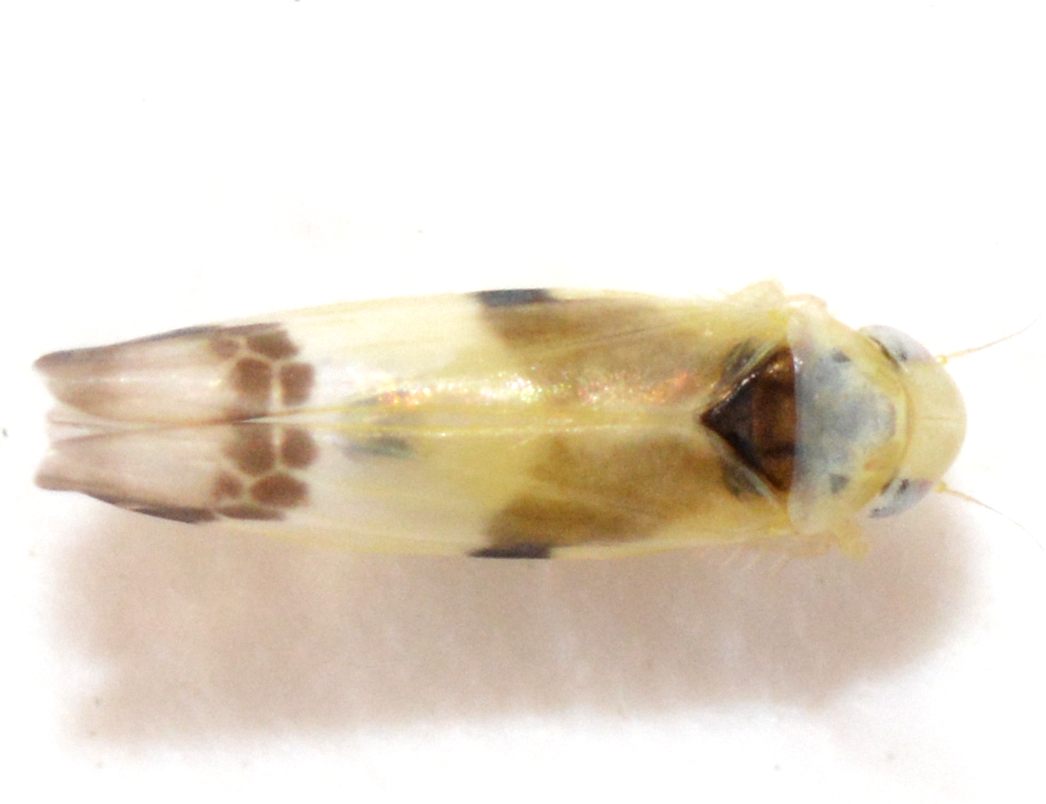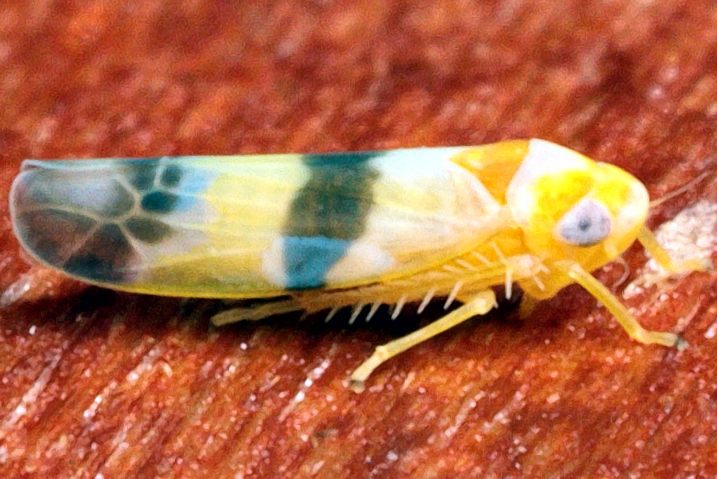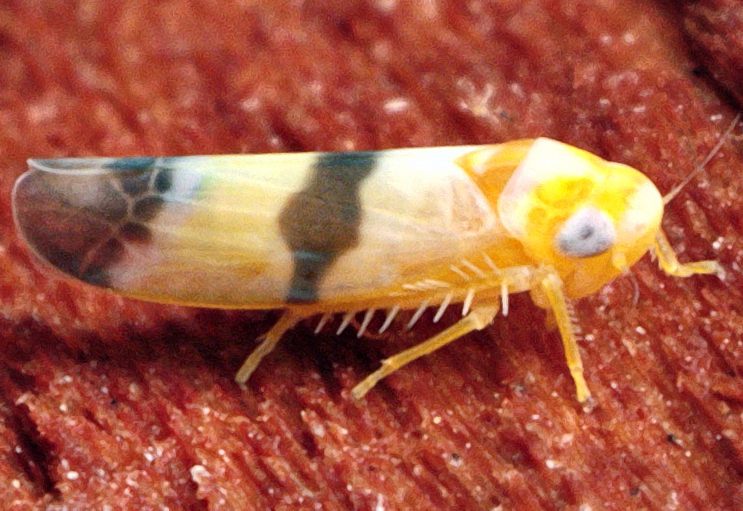
|
|
|
| synonym |
Typhlocyba venusta |
| description |
A yellowish species with a bold, prominent wing pattern that can strongly vary among forms. In the dark form, much of the basal half of the wings are dark brown, followed by a non-banded yellow section that is as wide as the dark band; this pattern gives this form a saddled look. In the paler form, much of the basal half of the wings are yellow, with a dark median transverse brown band that extends straight to the costal margins; this band can vary in width among individuals. The wing tips are dark brown, with boldly infuscated apical crossveins and brownish apical cells; the fourth, upper apical cell can be a little pale, appearing grayish-brown and smudgy. The head and pronotum are yellowish-white to bright yellow, the scutellum ranges from yellowish-orange (paler forms above pics) to dark brown (dark forms, some paler forms). The abdomen is yellow with the dorsum of the basal three segments brown; sometimes the basal half of the segments are brown. Adults are 3.25-3.75 mm long. (Christian, 1953)
For more images of this species showing variation, see: BG. |
| distribution |
Eastern and central North America (3I) |
| abundance |
Recorded from a few counties in the mountains, probably more abundant in at least this region. |
| seasonal_occurrence | |
| habitat |
Has been found near montane mixed hardwood forest. |
| plant associates |
Tilia americana (basswood), Tilia sp., Ulmus sp. (elm) (3I) |
| behavior |
Can be attracted at night with a light. |
| comments |
The paler forms of E. venusta, with a transverse median wing band rather than a large basal dark patch, are similar in appearance to E. gillettei. The band of both species can vary drastically between both species, so the size of the band itself is not a good determinant of species. The key characteristic distinguishing the two species is the wing tips. In gillettei, the apical crossveins are strongly infuscated but the wing tips themselves are lightly infuscated and typically appear pale, providing a noticeable contrast with the crossveins; as a result of the pale tips, dark crossveins, and median transverse band, the wings appear double-banded. In E. venusta, the apical crossveins are strongly infuscated BUT the tips are also dark, forming a typically solid brown tip; sometimes the apical cells aren't quite as dark as the crossveins, but they are still noticeably dark compared to typical gillettei. Typically, the infuscations around the crossveins are bolder and thicker in venusta compared to gillettei, but the extent to which these veins and the surrounding cells are infuscated can strongly vary in gillettei; darkness of wing tips is a better characteristic to use when determining species. (Hamilton, 1983) |
status |
[Native:]
[Introduced:]
[Extirpated:] | | list_type |
[Official:]
[Provisional:] |
| adult_id | Unmistakable and widely known Identifiable from good quality photos of unworn specimens
Identifiable from photos showing undersides, or other specialized views [e.g., legs, face]
Identifiable only by close inspection of structural features or by DNA analysis NULL |
| nymph_id | Unmistakable and widely known Identifiable from good quality photos, especially where associated with known host plants
Identifiable from close inspection of specimens or by DNA analysis
Identifiable only through rearing to adulthood NULL |
| G_rank |
|
| S_rank |
|
| rank_comments |
|
| tribe |
Typhlocybini |
| subgenus |
Empoa |
Species Photo Gallery for Empoa venusta No Common Name |
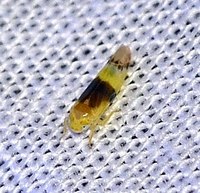 | Photo by: Paul Scharf, B Bockhahn, K.Kittelberger
Watauga Co.
Comment: Attracted to UV Light | 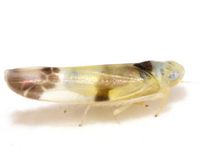 | Photo by: Kyle Kittelberger, Brian Bockhahn, Paul Scharf
Avery Co.
Comment: open area near mixed hardwood forest |
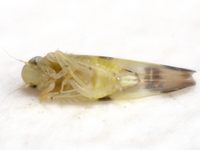 | Photo by: Kyle Kittelberger, Brian Bockhahn, Paul Scharf
Avery Co.
Comment: open area near mixed hardwood forest | 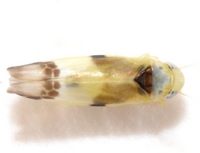 | Photo by: Kyle Kittelberger, Brian Bockhahn, Paul Scharf
Avery Co.
Comment: open area near mixed hardwood forest |
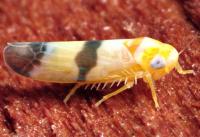 | Photo by: Ken Childs
Out Of State Co.
Comment: pale form |  | Photo by: Ken Childs
Out Of State Co.
Comment: pale form |
 | Photo by: Ken Childs
Out Of State Co.
Comment: pale form | 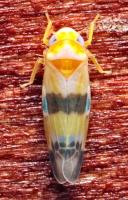 | Photo by: Ken Childs
Out Of State Co.
Comment: pale form |
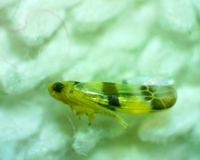 | Photo by: Ken Kneidel
Yancey Co.
Comment: 3.3 mm male, forest edge with small lawn and meadow nearby |  | Photo by: Ken Kneidel
Yancey Co.
Comment: 3.3 mm male, forest edge with small lawn and meadow nearby |
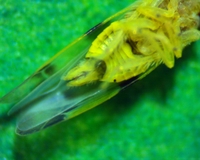 | Photo by: Ken Kneidel
Yancey Co.
Comment: 3.3 mm male, forest edge with small lawn and meadow nearby | 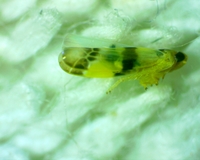 | Photo by: Ken Kneidel
Yancey Co.
Comment: 3.3 mm male, forest edge with small lawn and meadow nearby |
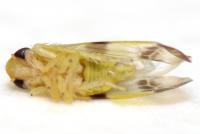 | Photo by: Ken Kneidel
Yancey Co.
Comment: 3.3 mm male, forest edge with small lawn and meadow nearby. © Kyle Kittelberger | 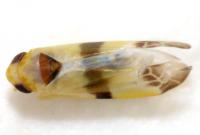 | Photo by: Ken Kneidel
Yancey Co.
Comment: 3.3 mm male, forest edge with small lawn and meadow nearby. © Kyle Kittelberger |
 | Photo by: Ken Kneidel
Yancey Co.
Comment: 3.3 mm male, forest edge with small lawn and meadow nearby. © Kyle Kittelberger | 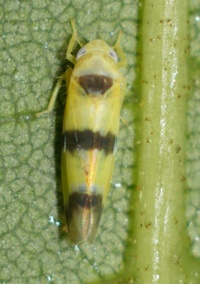 | Photo by: Scott Bolick
Surry Co.
Comment: |
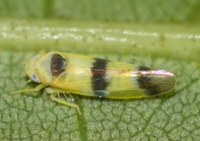 | Photo by: Scott Bolick
Surry Co.
Comment: |  | Photo by: Ted Wilcox
Watauga Co.
Comment: unid_leafhopper |
 | Photo by: Ted Wilcox
Watauga Co.
Comment: unid_leafhopper |

 »
»
